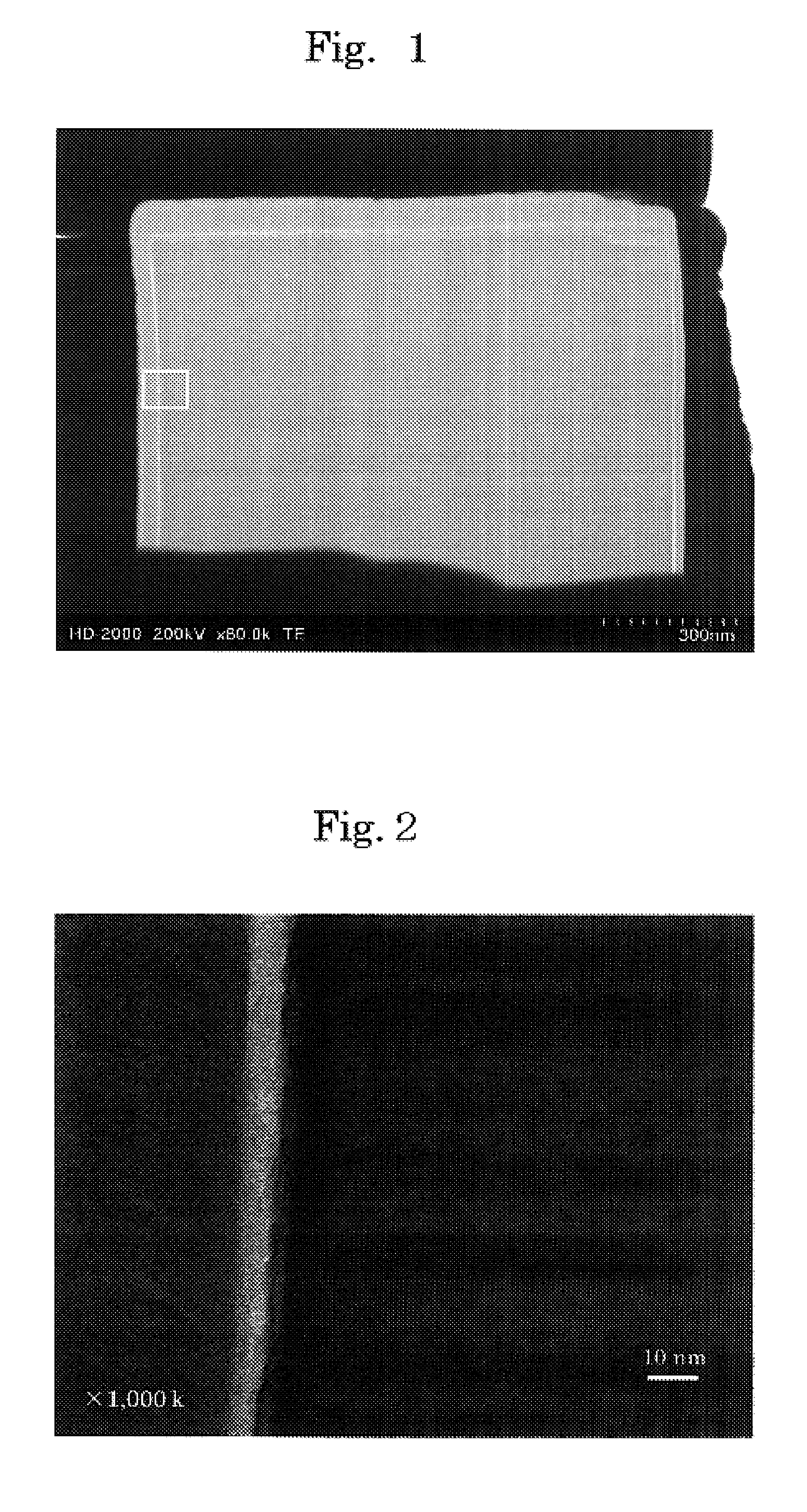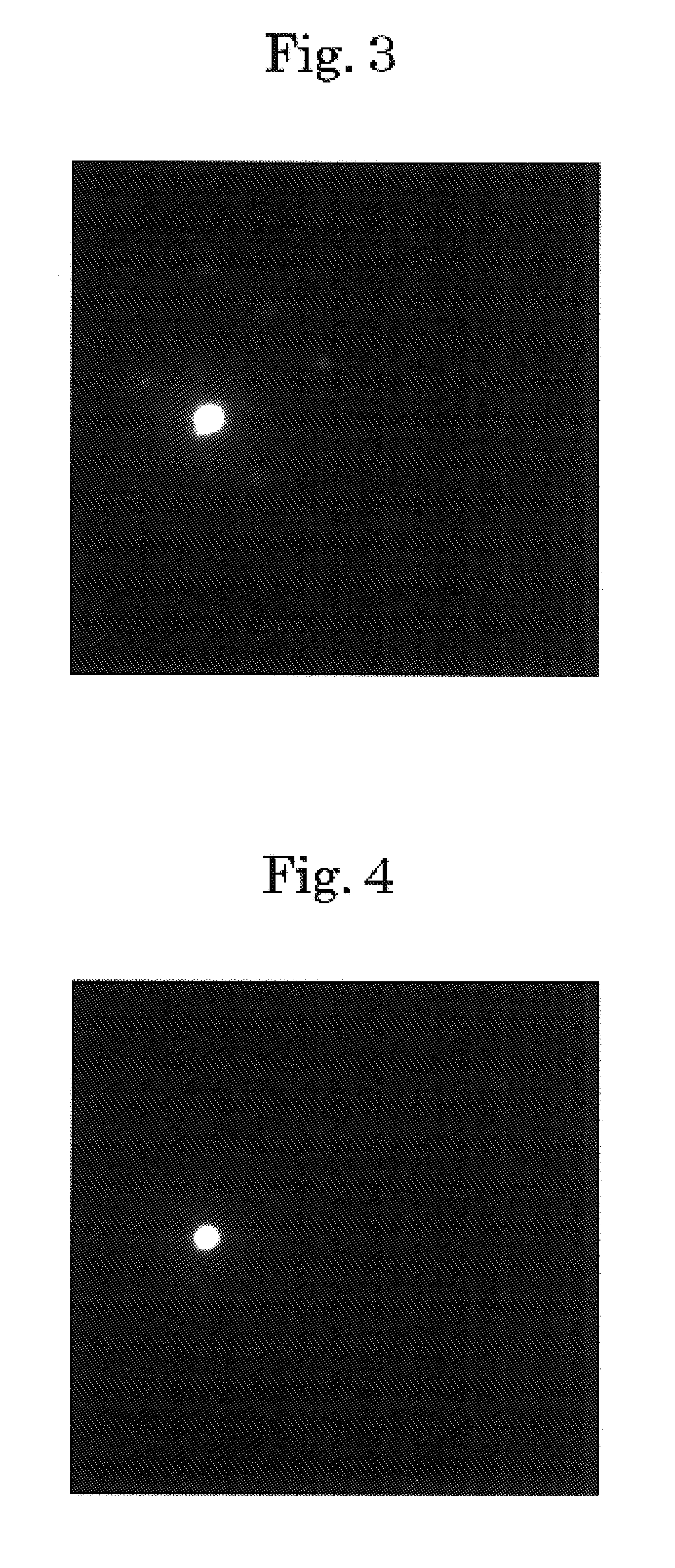Crystalline silicoaluminophosphate salt molecular sieve having octaoxygen-membered ring pore, process for producing the same and process for producing methylamine with the molecular sieve as catalyst
a technology of crystalline silicoaluminophosphate and molecular sieve, which is applied in the direction of molecular sieve silicoaluminophosphate, silicon compounds, physical/chemical process catalysts, etc., can solve the problems of waste fluid disposal, problems to be solved both, and conventional processes require lots of steps. , to achieve the effect of stable activity and dimethylamine selectivity
- Summary
- Abstract
- Description
- Claims
- Application Information
AI Technical Summary
Benefits of technology
Problems solved by technology
Method used
Image
Examples
example 1
[0156]A uniform mixture of 85% by weight phosphoric acid (46.12 g) and pure water (191.16 g) was cooled to 30° C. or lower, to which pseudoboehmite (26.32 g: PURAL SB from SASOL GERMANY GmbH, Al2O3 content: 77.5%) was added with stirring. The resulting mixture was stirred for 30 minutes, and then 35% by weight aqueous solution of tetraethyl ammonium hydroxide (79.94 g) was added thereto while it was cooled to 30° C. or lower under stirring. The resulting mixture was stirred for 1 hour, and then silica sol (18.04 g: SNOWTEX N from Nissan Chemical Industries Ltd., SiO2 content: 20% by weight) was added thereto, and further stirred for 30 minutes. The resulting mixture had a composition in terms of oxide molar ratio as follows: 0.95 TEAOH:1.0 Al2O3:1.0 P2O5:0.3 SiO2:75 H2O (TEAOH: tetraethyl ammonium hydroxide). The resulting mixture was hydrothermally treated with stirring at 400 rpm in a stainless steel autoclave of 0.6 L in inner volume. In the hydrothermal treatment, temperature as...
example 2
[0157]A white calcined powder (40.50 g) was prepared in the same manner as in Example 1, except that temperature as of the contents under hydrothermal treatment was elevated at 73° C. / hour from 25 to 115° C., kept at 115° C. for 5 hours, and then elevated at 73° C. / hour from 115 to 170° C. in the first step, and then kept at 170° C. for 35 hours in part of crystallization step of the first step and in the second step. Table 1 shows catalyst yield, abundance ratio of AFI structure, degree of crystallization, grain shape and average grain diameter. Table 2 shows reaction performance 6 hours after the beginning of feed of raw materials.
example 3
[0158]A white calcined powder (46.15 g) was prepared in the same manner as in Example 2, except that the addition amount of 35% by weight aqueous solution of tetraethyl ammonium hydroxide was changed to 63.14 g, and the addition amount of pure water was changed to 202.07 g. The hydrothermally treated mixture had a composition in terms of oxide molar ratio as follows: 0.75 TEAOH:1.0 Al2O3:1.0 P2O5:0.3 SiO2:75 H2O. Table 1 shows catalyst yield, abundance ratio of AFI structure, degree of crystallization, grain shape and average grain diameter. Table 2 shows reaction performance 6 hours after the beginning of feed of raw materials.
PUM
| Property | Measurement | Unit |
|---|---|---|
| thickness | aaaaa | aaaaa |
| grain diameter | aaaaa | aaaaa |
| temperature | aaaaa | aaaaa |
Abstract
Description
Claims
Application Information
 Login to View More
Login to View More - R&D
- Intellectual Property
- Life Sciences
- Materials
- Tech Scout
- Unparalleled Data Quality
- Higher Quality Content
- 60% Fewer Hallucinations
Browse by: Latest US Patents, China's latest patents, Technical Efficacy Thesaurus, Application Domain, Technology Topic, Popular Technical Reports.
© 2025 PatSnap. All rights reserved.Legal|Privacy policy|Modern Slavery Act Transparency Statement|Sitemap|About US| Contact US: help@patsnap.com


